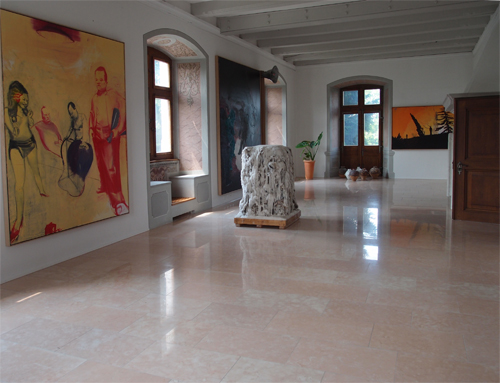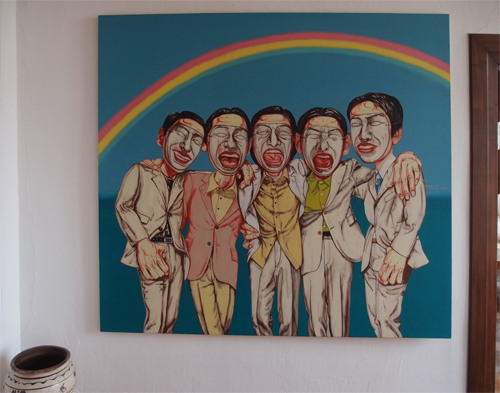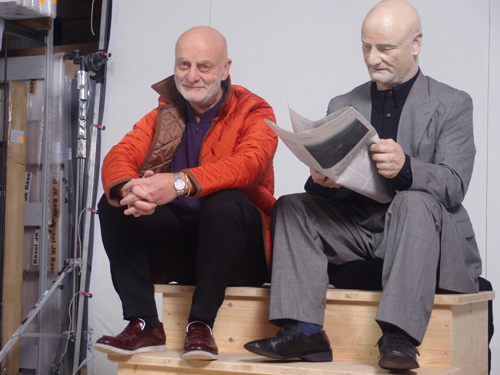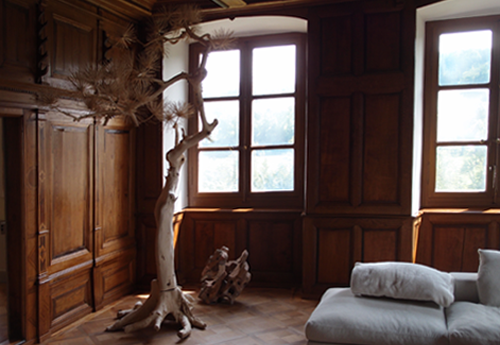How people collect contemporary art: My typology of collecting styles
by Uli Sigg
In most encounters with the rapidly expanding Asian art communities, one question keeps resurfacing in almost every conversation: How can a newcomer collect intelligently while facing a seemingly infinite rate of art production all across the globe?
The softer the science – and this is a science – the more advisable it is to open the subject with an enlightening quote of an authority in the field: “The true collector is an artist, squared. He chooses paintings and hangs them on the wall. In other words, he paints himself a collection.” (Marcel Duchamp) Is that so?

In contrast with what Duchamp’s name is commonly associated with, this article does not attempt to limit or de-limit what art and artist may mean. It also does not analyse whether the roots of collecting may be phylogenetic, whether they originate in human instinct, in greed, in a gaping void, in a desire for refinement and self-cultivation , in the brain stem or from emissions of endorphins. Such subjects are left to psychoanalysts, art historians, neuroscientists and others. This article simply uses the term collecting to denote accumulating things with a logic, so as to create meaning beyond what the single collection item does contain in itself. I define a simple typology of collecting, drawn from comparative viewings of numerous collections, publicly or privately owned, lavishly displayed or neglected, accessible to everyone or presented in secrecy, and located all over the planet.
The “I like art” accumulating style
The “I Like art” accumulating style is the most common type practiced among holders of artworks. It is in fact a mere accumulation of artworks kept together by a specific liking, or possibly taste, of a buyer, at least present at the time of acquisition. As a style, it is normal and legitimate. Anyone buying art enters this stage, starting with an empty wall and some money in the pocket. This is the first stage, namely to buy simply what one likes; it is an approach contained in one’s self rather than a coherent concept. Most buyers remain there, some with very large accumulations.

The “Investor” collecting style
This is self-explanatory, its purpose being clearly Return on Investment. This does not imply a value judgment – all collecting is equally legitimate. This style requires specific market expertise and is usually built with the help of consultants, collecting often by ear rather than by eye. Investor collecting strategies emulate sophisticated patterns known in the financial industry: High risk “Venture” with very young artists or “Early Stage” emerging artists, investment in mature artists with liquid market, big-ticket masterpieces considered safe, and combinations thereof may form a portfolio.
The “Status” collecting style
The “Status” collecting is the type that as of now has begun to proliferate worldwide. It gathers the must-haves from the global mainstream formed by the 100 or so artists who appear everywhere, whose names are listed in all the auction catalogs, whose works fill the art fairs, museum exhibitions, ever more the museum collections, and now inevitably many collectors’ homes from New York to Jakarta. While this collecting style may require less thought, it does drain considerable financial resources and has one resounding effect: that these collections from New York to Jakarta do in the end look very much alike. Between collection visits the discourse can then only be whether this was the larger Richter or that a more rebellious Basquiat compared to the ones viewed in the last location. If Richter and Basquiat are mentioned here, it is not to cast doubt on their being great artists. They cannot be blamed for being everywhere. But it makes for ever more uniform and therefore monotonous collections. A variant of the “Status” collecting is to accumulate only the so-called masterpieces as defined mainly by auction catalogs. In fact, if gifted with deep pockets and armed with professional advice, anyone can do it. It may even prove to be financially very rewarding if one timely captures the tides of the market favour. In today’s world, this collecting style indeed provides much desired status. It is exclusive in that it allows for easily readable distinction and differentiation from the know-nots within the high society, not to mention from the lowland of the have-nots.
The “Focused” collecting style
Then there is focused collecting. What is a focus? It is a core idea, a concept, a logic that binds the works which otherwise remain random disconnected dots. It leverages single works to create additional meaning through their togetherness, and therefore advances comprehension. To choose the focus is the crucial decision for any collecting. It is having a focus that marks the difference from just amassing art works. It does not matter what the focus is – to collect only squares, or images of dinosaurs, renaissance drawings, cartoons, a certain atmosphere, certain processes, indeed anything… For any collector, this is a very difficult decision to take since it implies exclusion and discipline in view of things very tempting. Nevertheless, it gives a collection a distinct character and what we may sense as soul.
The “Web” collecting style
If one wants to perceive collecting as an iterative process, or if one would even want to construct a hierarchy amongst collecting styles, then the most complex way is weaving a collection as a web. That is to say, having decided on a focus, to collect works which web the fullest context; with works shedding light on, explaining and opening up further spaces for this core idea, to best represent and illustrate it. Thus works are charging each other up, in ways they could not have when isolated from this context. And very importantly, it is not simply about lining up masterpieces like a string of pearls. Masterpieces indeed, but in contemporary art attributions as such come and go; there is nothing older or more outdated than an auction catalog of fifteen years of age. “Web” collecting is just as much about finding the pieces which may go unattended, or ascribed to artists considered second tier at times – which in itself is subject to change over time – to fill the perception gaps, to narrate the underlying subtexts and to ultimately bring a collection to the fore.

Still, to do full justice to a collector remains futile. One would need to know in depth about the collecting process and the full potential of the collection universe available to a collector, then one would also need to consider the constraints. Which research efforts were undertaken and which were not? What were the works available for choice at a given moment and which works were not selected? What financial resources were available to achieve the actual result? Where those failures put out of sight now rest, what they are, and how numerous? And many more issues…
Every collection is a process materialized. It is a distillate of the collector’s vision, imagination, intuition and passion, of research efforts, of the opportunities seized, of the resources made available, of hard work, and of the lack thereof: after all truly similar to an artist’s work. Duchamp may have got it right.

